Introduction
In general, I have nothing but praise for Portugal Trails – the agency I worked with to plan this leg of my trip. However, this was a day where the contracted service fell short of my expectations although I likely bore some responsibility for not clearly defining them. Portugal Trails provided a driver and, based on this description, “Private driver tour to Sintra with tickets to the Pena Palace and the Quinta da Regaleira included.” I expected someone who would serve as both a guide and a driver.
The driver only provided transportation and, while he tried to point out some highlights and alert me to some specifics about the two palaces making up the day’s focal points, the first note in my daily contemporaneous journal was, “While Armando’s English was passable, it seemed like it took a lot of concentration and effort on his part and this made conversation difficult.” But before we get to Sintra, I have to
Put a cork in it!
On Jeopardy, it might sound like: ‘This country leads the world in the production of cork.’ “What is Portugal?” In fact, more than half the cork used in the world is produced in Portugal. When Américo Amorim died in 2017, he was the richest person in the country. He owned 50 percent of the holding company Corticeira Amorim and the first company in the Amorim Group was Amorim & Irmãos – a company that began manufacturing cork stoppers for port wine bottles in 1870.

You can see cork forests like the one above all over Portugal. Some of the trees will have been harvested while others are more intact.
If you’re beginning to think that money does, indeed, grow on trees, let me provide a few words of caution before you invest in your first cork tree farm. The cork tree is a member of the oak family (Quercus suber) but the tree needs to grow for 25 years before it can produce its first harvest and the cork from this harvest will be of the lowest quality – usable for sound proofing, perhaps in the building trades, or to juice a baseball bat.
Fortunately, only the bark is harvested. The trees remain standing and can live for as long as 270 years thereby making cork one of the world’s most sustainable resources. Unfortunately for your fledgling investment, the subsequent harvest won’t be ready for another nine years. Although better than the virgin harvest, this second harvest will still fail to produce wine stopper quality cork which both accounts for 70 percent of cork’s use and brings the highest prices. Beginning with the third harvest – a mere 43 years after you first planted the trees – you have amadia cork and you can now manufacture cork stoppers.
The trees must be stripped manually so workers known as tiradors will work in pairs -one in the tree and one on the ground.
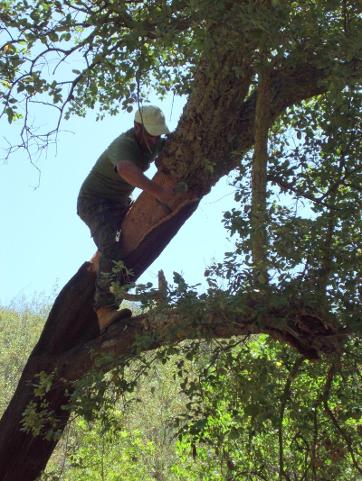
(From saomarcosdaserra.com)
They use hand held axes to make cuts at the top and bottom of the trunk then peel off the bark. At a fixed salary of between 80 and 120 euros per day with health care and other benefits, they are among the highest paid workers in any agricultural industry anywhere. I snapped this close up of a cork tree en route to Sintra.
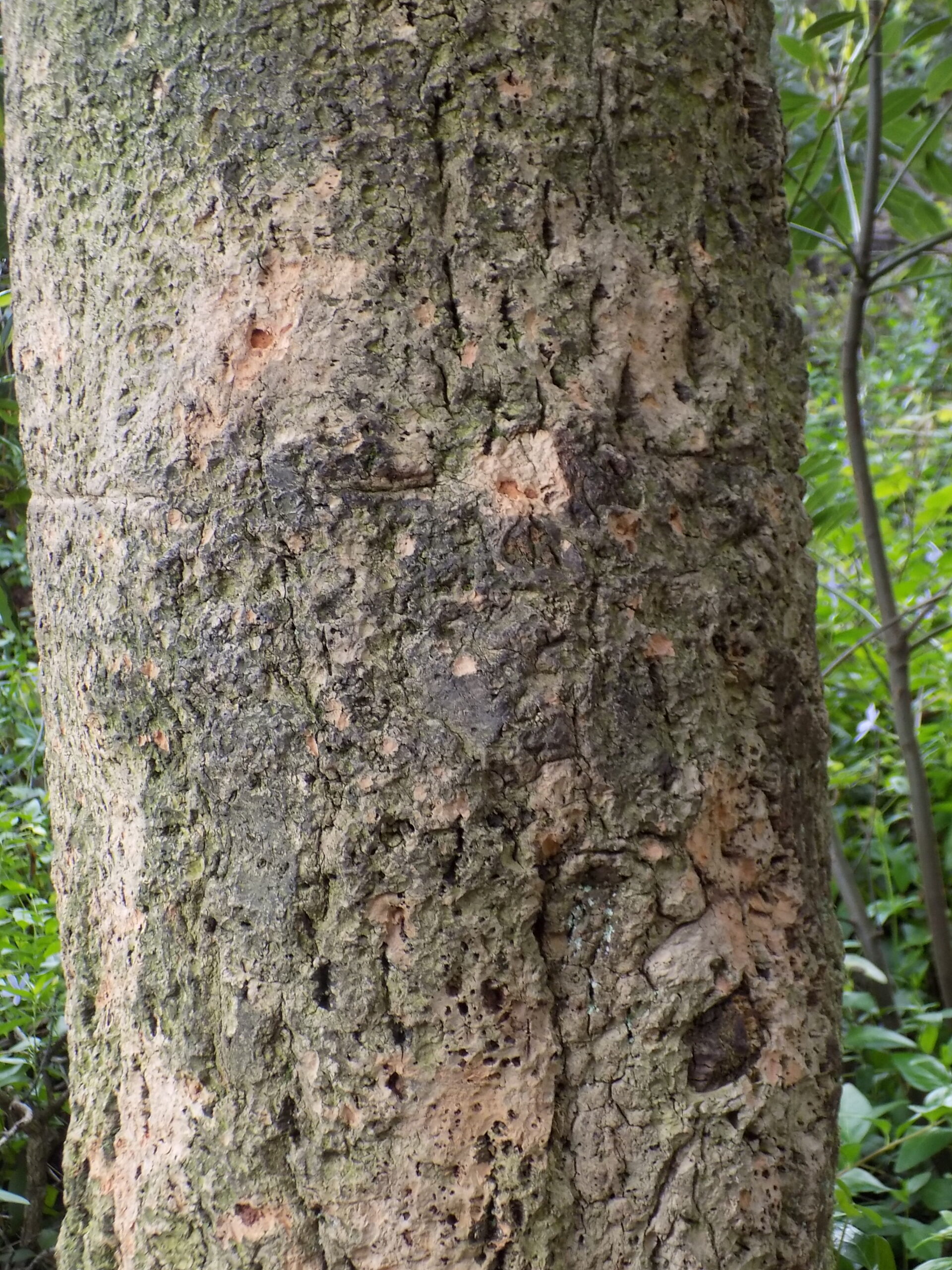
On to Sin(tra) City
Armando, my driver for the day was waiting for me in the hotel courtyard and we started off for the town of Sintra at about 09:00. Although the town itself is small, the municipality is large and densely populated. It’s about 40 kilometers or an hour by train from Lisbon so, like Cascais, it’s both a commuter residence and tourist attraction. The village itself is charmingly picturesque but what draws most tourists to Sintra are its palaces and castles. These are: the Monserrate Palace, the Moorish Castle (Castelo dos Mouros), the National Palace, the Pena Palace, the Queluz Palace, and the Quinta da Regaleira.
As noted above, my visit included tickets to two of the six castles and, had I pressed Armando, I think I could have persuaded him to let me walk up the mountain to the Castelo dos Mouros but it was early days and I was as eager to return to Cascais to continue exploring it as a potential second-home landing spot as I was to visit the ruins of the eighth century castle that I’d seen from a distance.
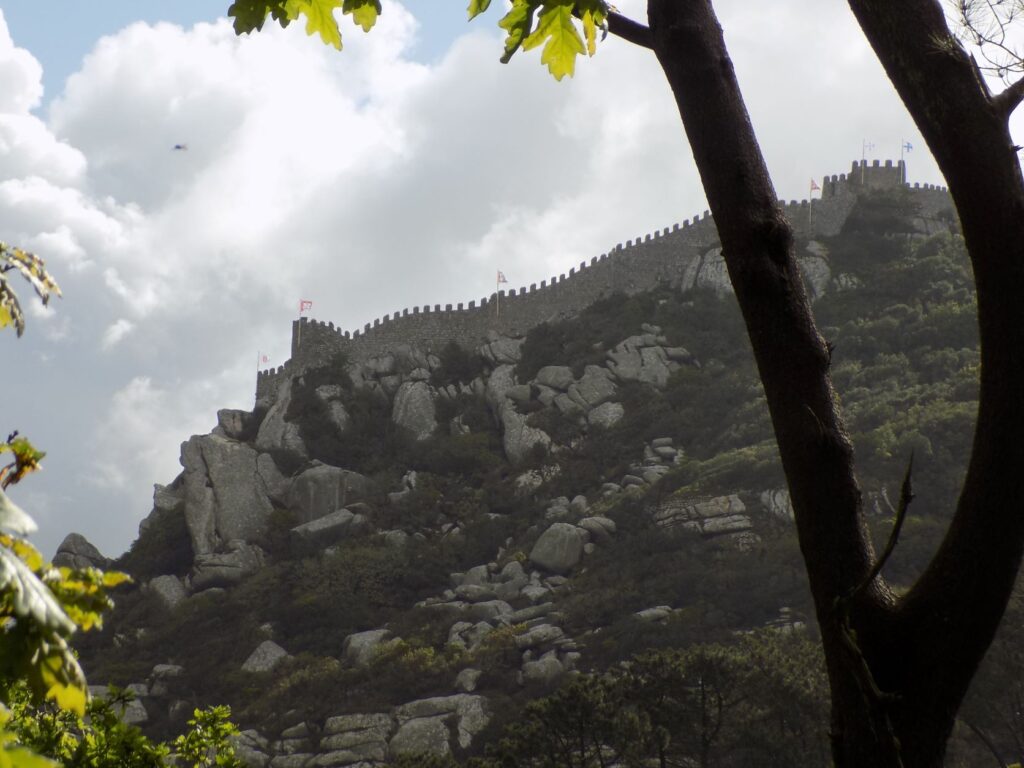
The moors held the territory until they voluntarily surrendered it to Afonso Henriques in his Reconquista after he retook Lisbon in 1147. (I’ll have more to say about Portugal’s first king later in this journal.) Moorish governors likely resided in the Chão da Oliva the site of the National Palace although the first documentation of a palace on the site dates to 1281. It’s believed that every Portuguese monarch spent some time there during their reign. The most notable feature of the palace are its two enormous conical chimneys added in the 14th century.
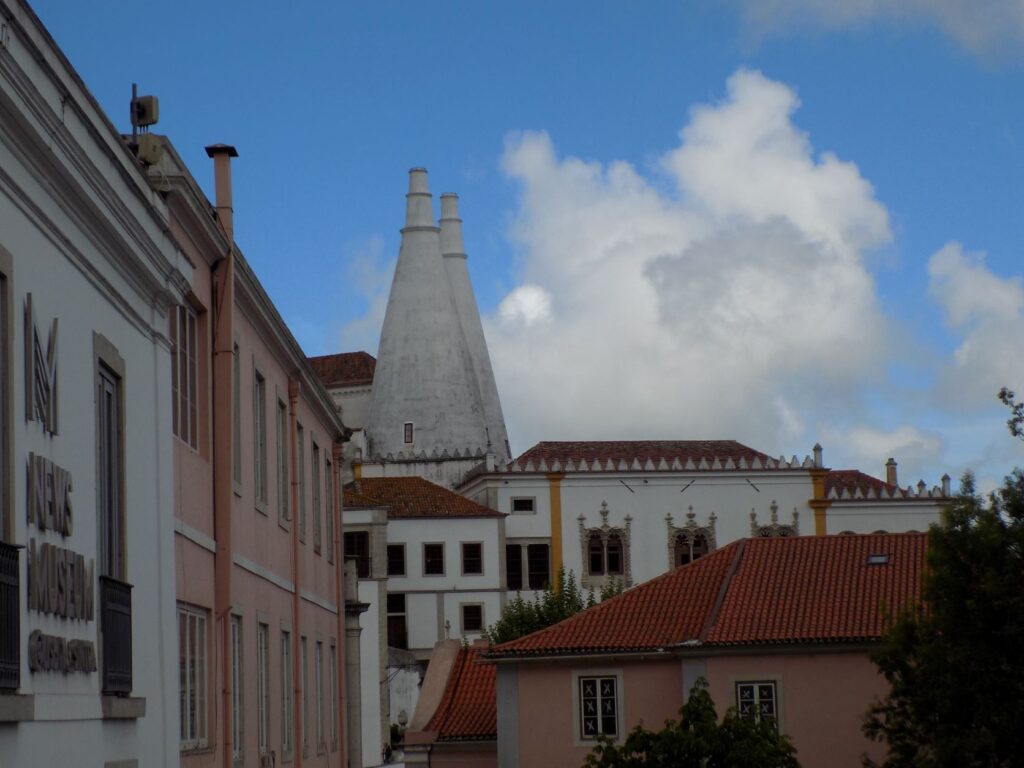
From Chapel to Palace
Sitting atop a 480-meter hill and supposedly visible from Lisbon on clear days, the Pena Palace had a surprisingly modest beginning in the 12th century as a small chapel dedicated to Our Lady of Pena. Despite occasional visits from the royal family, it remained in its original state until the early 16th century when King Manuel I ordered the construction of a monastery there

(From serradasintra.net)
where it housed a maximum of 18 monks of the Hieronymite Order. The cloister,
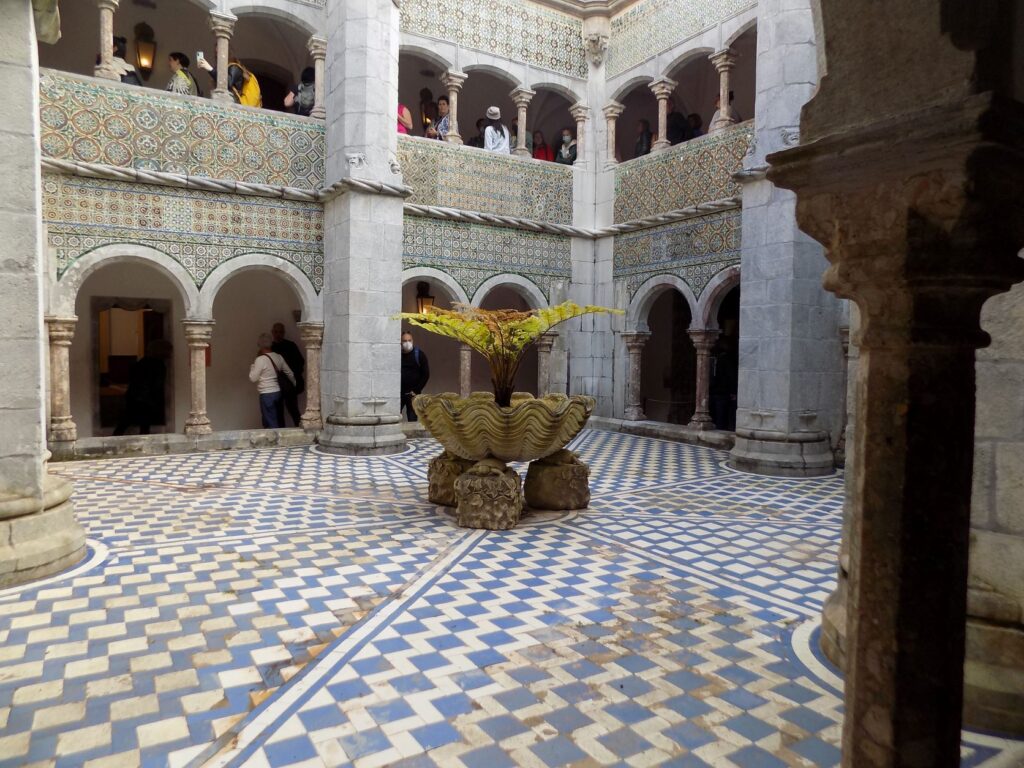
built in the Manueline (Portuguese late Gothic) style, was completed in 1511 with the larger structure added over time.
It continued serving as a contemplative retreat for the monks and Portuguese royals until the Great Lisbon Earthquake in 1755 – another topic to which I’ll return throughout this recounting. Although the earthquake left much of the monastery in ruins, the Manueline Cloister remained relatively intact and the monastery remained active until it was abandoned with the dissolution and nationalization of nearly all Portuguese monasteries at the end of the Portuguese Civil War on 28 May 1834.
The site gradually fell into disrepair until, using part of his own fortune, it was acquired by Ferdinand of Saxe-Coburg and Gotha who had become King-consort Ferdinand II after his 1836 marriage to Queen Maria II. Considered one of the most cultured men in Europe, Ferdinand eventually became known as the ‘King-Artist.’
Initially, he planned only to restore the building to serve as a summer residence for the royal family but as he became ever more enamored with the town, the hills, and the aesthetic value of the ruins, he opted to construct a more elaborate palace that, befitting the Romanticism of the time,
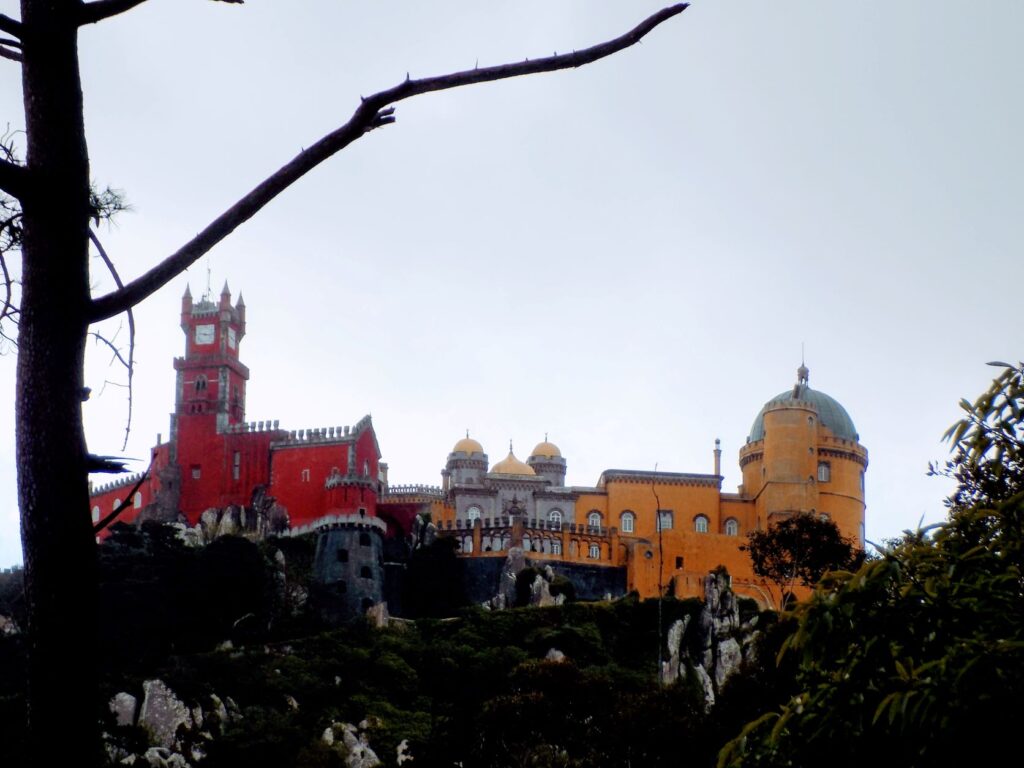
displayed a taste for the sublime, for grandiose landscapes, and the fragility of the human condition. He incorporated the existing cloister into his additions and filled the site with Manueline and Moorish influences.
In addition to his interest in the arts, Ferdinand was also a collector in search of exoticism and untamed nature. He deliberately designed twisting paths that took visitors into unexpected places with epic views

and he planted tree species from every continent in the 85 hectares of parkland surrounding the palace. As a result of this planting, some consider the Park of Pena to still be the most important arboretum in Portugal.
The palace continued serving as another summer residence for the royal family until the Declaration of the Portuguese Republic on 5 October 1910.
Some cautionary words
One of the reasons I was able to visit only two of Sintra’s famous palaces is that I chose to tour the Pena Palace interior as the ticket provided by Portugal Trails allowed. Although my visit wasn’t at the height of the season and my entry was timed for 10:30, the line was so long that I stood in it for about 45 minutes before my actual entry.
My cautionary words are these: No ticket is needed to visit the grounds or the outside of the palace. If you ever visit Sintra and want to see the palace interior, I’d urge you to purchase tickets in advance and enter at the earliest possible time unless you’re planning an overnight stay.
Here’s your link to this post’s photos that include some of the interior of the palace.